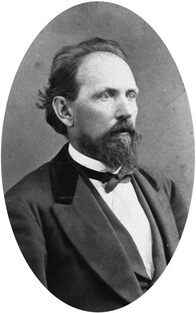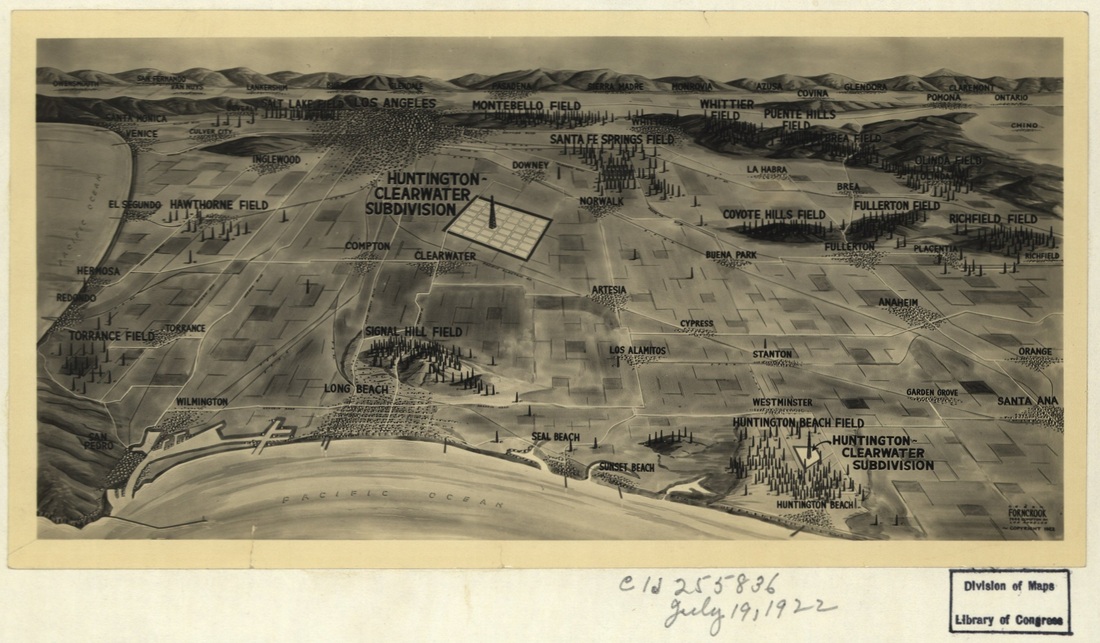The truth about who owned the land in Chavez RavineFor some reason, there seems always to have existed confusion about who owned the land on which the three so-called Chavez Ravine communities — la Loma, Palo Verde and Bishop — came to be. The answer is simple: With the exception of a small portion of Palo Verde, and all of Bishop, the land originally belonged to Francisco Solano and his heirs. The following map is quite busy, but, hopefully, an explanation will clarify the map. The red rectangle at the lower-right of the map is the original 16-acre Solano Tract that, today, is the lower Solano Canyon community. The large red rectangle is the remaining 70 acres originally purchased by Francisco Solano in 1866 (along with the 16 acre parcel, for a total of 86 acres).
The yellow rectangle is an additional 52½ acres that were purchased by George Hansen and subsequently sold to the heirs of Francisco Solano, making a total of 138½ acres that were owned by Francisco Solano's heirs. The upper portion of Lot 7 (in the red rectangle), plus a small piece of Lot 6 (the upper portion of the yellow rectangle) is Solano Tract No. 2, which is, today, the upper part of Solano Canyon. Where, then were la Loma and Palo Verde? Look at Lots 6 (in yellow) and 7 and 2 (in red): the loma — for which the community of la Loma took its name — can clearly be seen. The blue line in Lot 6 is the remnant of Bishop's Road, and it marked the boundary between la Loma and Palo Verde. The upper blue line is the remnant of Boylston Street. Palo Verde, then, was all of that remaining portion of Lot 6, plus all of Lot 5, between Bishop's Road and Boylston Street. For reference, the blue oval is the LA Police Academy. Bishop was located below Palo Verde, roughly in the upper half of Lot 4 that is labeled "L & J Garibaldi"; in fact, there was a Garibaldi Street in the Bishop community. The double white line between Palo Verde and Bishop was Effie Street. Note that missing altogether is any reference to Julián Cháves. Cháves never owned any of the land that made up any of the so-called Chavez Ravine communities; in fact, the Chavez Ravine communities had nothing at all to do with Chavez Ravine itself; rather, they were located in Sulphur, Cemetery, and Solano Ravines. How the myth of Julián Cháves was inserted into the communities that bore his family name remains a mystery; but, in any case, it is categorically untrue. An interesting article in a recent online issue of LAMag reminds us that there was oilwell drilling activity proposed, and, in fact, executed in the Stone Quarry Hills. Not only that, but exploratory wells were drilled in Solano Canyon itself. I found this article particularly interesting because my academic training is as a petroleum engineer and my professional career was spent as a research scientist and practicing reservoir engineer. The following is an excerpt from an 1895 article in the Los Angeles Herald subtitled Unusual Number of Oil Permits Considered. Clipped from the article is this: The Solano tract referred to here is the 16-acre tract that Francisco Solano bought from the City in 1866; in other words, lower Solano Canyon. Included in the LAMag article is this wonderful map from the Library of Congress that was made by Edna Forncrook of Los Angeles in 1922 that shows graphically the extent of oilwell drilling activity in, and around, Los Angeles, which, by 1922, was extensive. Click to enlarge the map and you will see, between Los Angeles and Glendale-Burbank, and just behind the "L" in "Los Angeles", the Stone Quarry Hills. The original article in LAMag can be found here.
"His was the driving force behind the creation of Solano Canyon"  George Hansen: Austrian immigrant, Gold Rush prospector, early Los Angeles resident, professional surveyor, Los Angeles City and County Surveyor, large land owner, and mentor to Alfred Solano. And, in the process, his was the primary driving force behind the creation of the Solano Canyon. Hansen was a native of Flume on the Dalmation coast of the Austrian Empire. He came to California around Cape Horn in 1850, his goal to prospect for gold in the Mother Lode country; but that having failed, he went to Los Angeles in 1853. He borrowed money, purchased surveying equipment, and began the work of surveying and mapping land around Los Angeles. One of his first projects was to lay out the Anaheim townsite for the Los Angeles Vineyard Society of San Francisco, a group of investors. He took Alfred Solano under his wing, became his mentor and taught him surveying. Eventually, Solano became his ward, and the two men worked together and were in business together (as Hansen & Solano) until Hansen's death in 1897. Unmarried and childless, Hansen left his entire estate to Alfred Solano. Hansen and Solano surveyed the property purchased from the City by Francisco Solano, Alfred's father, in 1888, 17 years after the death of his father and four years after the death of his mother, Rosa Casanova. Alfred Solano subdivided the estate, 87 acres in all, located in the Stone Quarry Hills, for distribution to the heirs of Francisco and Rosa. And the rest, as they say, is history. This is a portion of a map made by George Hansen in 1866. It represents the initial survey of Francisco Solano's purchase from the City of 16.97 acres. Alfred Solano was nine years old at the time; whether he was on the ground with Hansen when this survey was made is not known. The text reads, in part: "Francisco Solano had the tract of 35.65 acres surveyed Aug. 21, 1866 and petitioned the City Government to sell the same, but the City Council resolved to sell only 16 acres ... The City of Los Angeles to Francisco Solano. Sept. 13, 1866. Recorded 18 Oct. 1866"
 The term 'Chavez Ravine' means different things to different people. To a historian, it refers to the westernmost ravine on the massíf known, in recent times, as the Stone Quarry Hills, which today includes Elysian Park, the Solano Canyon community, and, of course, Dodger Stadium. To many Angelinos, it means Dodger Stadium on game days: the Boys in Blue, Dodger Dogs, bobbleheads of well-known players, National League Pennants and World Series Titles, and, of course, baseball (but no tailgating). Yet to still others, a dwindling few who call themselves los Desterrados — the exiles — it means having once lived in one of the three communities of la Loma, Palo Verde, or Bishop, known collectively as Chávez Ravine, and it means having been evicted from one's home and, more likely than not, having watched it be destroyed by bulldozers, with armed policemen and newsmen standing idly by, watching and filming the chaos, mostly disinterestedly. Chavez Ravine — the ravine, not any of the rest of it — was a steep canyon that, the geologists will tell you, was one of many ancient channels of the Los Angeles river that was uplifted through tectonic forces millenia ago. By the mid-19th-Century, there was a steep, dusty trail that rose all the way to the summit of the massíf, then passed through a narrow defile and descended to the flat land by the river, an area now known as Frogtown, and where Riverside Drive is today. The land that the trail emptied onto was owned in 1856 by Juan Bouett, the author's 2X-great-grandfather (see the map, above). Mariano and Julián Cháves, brothers from New Mexico Territory, also owned land on the flats adjoining that of Juan Bouett, and on the East side of the river. Julián's land on the west side of the river, 81.75 acres, was deeded to him in 1847 by Esteban Quintero. It is said, and repeated endlessly without proof, that he also owned 83 acres in the ravine near downtown, although I have never seen proof of that claim. I suspect that the 83 acres actually refers to his 81.75 acres by the river. In any case, it is likely that Chavez Ravine takes its name from one, or both, of the Cháves brothers. [Map source: a portion of SR_Map_0377, annotated by the author, The Huntington Library.] |
About the AuthorLawrence Bouett is a retired research scientist and registered professional engineer who now conducts historical and genealogical research full-time. A ninth-generation Californian, his primary historical research interests are Los Angeles in general and the Stone Quarry Hills in particular. His ancestors arrived in California with Portolá in 1769 and came to Los Angeles from Mission San Gabriel with the pobladores on September 4, 1781. Lawrence Bouett may be contacted directly here.
Archives
July 2018
Categories |





 RSS Feed
RSS Feed
